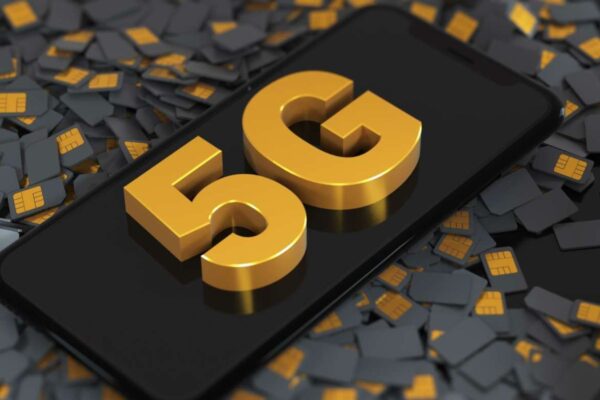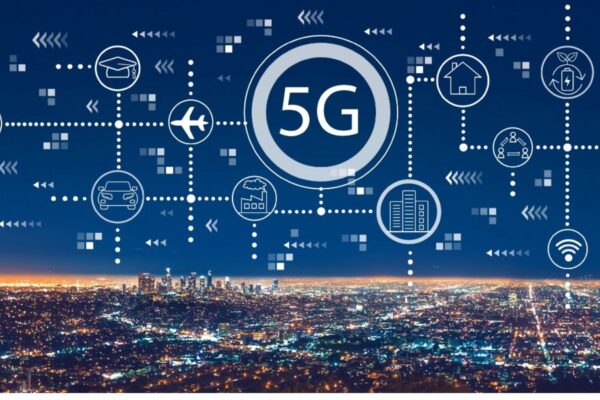Impact of 5G on India’s Economy; How it affects different sectors of India?

5G Billion Dollar Impact On India’s Economy
In a report on India’s digital revolution, the GSMA specifically focuses on the impending implementation of 5G services and their potential economic implications. According to the GSMA analysis, 5G will likely contribute Rs 36.4 trillion ($455 billion) to the Indian economy between 2023 and 2040.
Manufacturing (approximately 20% of the total gain), retail (12%), agriculture (11%), and other industries are predicted to benefit from 5G technology.
By 2030, 5G will make up more than a third of all connections in India, with 2G and 3G having a share of less than 10%. It also pointed out that India’s strong rate of 4G uptake (79%) shows a subscriber base prepared for the switch.
A third of individuals served by mobile broadband networks in India do not yet use the service, even though the percentage of connected adults (those over 18) has increased. The report indicated that the biggest obstacle is still a lack of technology and reading skills.
Additionally, there is a sizable gender disparity in both mobile device ownership and mobile internet usage. The gender disparity in cell ownership is only 14%, but it rises to 41% when it comes to mobile internet usage. According to the study, one of the biggest obstacles to women’s adoption and usage of mobile internet is a lack of knowledge and technical abilities.
“Speaking during the silver jubilee celebrations of the Telecom Regulatory Authority of India, Modi predicted that 5G would not only increase internet speeds but also swiftly usher in economic improvement and stimulate job creation (Trai). To speed up the introduction of 5G, he also urged greater levels of industry and government engagement.
Growth of 5G

The fact is that it will take us several years to create hundreds of billions of dollars worth of infrastructure on the ground in a nation the size of India. At this point, digital infrastructure enters the picture to speed up growth in all sectors. Our current generation of technology, including wearables and smartphones, will soon be integrated into the global internet ecosystem and other service providers. More crucially, these will be interconnected with many fields and domestic and international markets.
With more than 560 million internet subscribers, India is the second-largest and fastest-growing market for digital consumption after China. This is according to recent data from McKinsey. The government is still working to expand this, and one important step was the introduction of the biometric digital identity programme Aadhaar.
In 2017, the government introduced the Goods and Services Tax (GST), which helped more than 10 million enterprises join a single digital platform. Additionally, users’ uptake of data and internet subscriptions has been accelerated by competitive offerings from telecommunications companies.
Despite this, just 40% of Indians have access to the internet, and this number is significantly lower among those at the middle and bottom of the pyramid, especially in rural areas. Agriculture is a commercial area that is still largely unaffected by internet-based technologies and is primarily run by manual processes.
Introducing a digital revolution to the sector has the potential to significantly alter current farming practices. Therefore, it is important to promote digital ecosystems across the nation and in many industries.
5G will be essential if this goal is to become a reality. As we anticipate its impending launch, one of the most discussed effects will be on the Indian economy. The India Mobile Broadband Index 2022 projects India’s 5G revenues to reach USD 9 billion by 2026, setting high expectations.
After the pandemic’s post-onset digital revolution, it is now obvious that no industry can function and realise its full potential without an uninterrupted internet connection. The agriculture industry stands to gain significantly from 5G technology. The use of technology has the potential to increase this sector, which makes up about 20% of India’s GDP, to 50% or more.
Given that this industry depends on robust networks and connections with various regions of the nation, all stakeholders must have a seamless connection to provide customised service. Farmers who have the correct connections can access timely information on government services, appropriate crops for the season, market tracking for optimal pricing, and the opportunity to take part in trade-related activities.

Additionally, stakeholders can benefit from greater productivity and efficiency throughout the entire farm-to-market process by utilising smart farming and precision agriculture. For the country to experience increased prosperity and business expansion, 5G will be crucial, as will citizen participation.
5G will offer a channel for automation to aid billions of people and industries with their wireless connectivity to develop creative solutions at scale. Because of India’s current lack of established connectivity and speed of infrastructure, it is crucial to adopt wireless connectivity, as the majority of the population will be excluded from participating in the next phase of digital progress.
Additionally, India will develop into a more inclusive economy as more individuals use 5G to communicate with one another and optimise their processes, goods, and services, boosting India’s economy and GDP. It will develop into an ecosystem of a prosperous and productive economy where costs keep falling and output keeps rising.
5G Future in India

Closing the current digital divide is a goal that is doable with the launch of 5G services just around the corner. If we seize the appropriate chances at the right moment, we may reap the benefits of a rewarding future and a digital economy that encompasses all aspects of society sooner than we might anticipate.
“New applications are anticipated to realise the benefits of 5G, including those in the manufacturing sector (20% of the total benefit), retail, ICT, and agricultural sectors. The agency claimed in a report that applications for smart cities and smart government are expected to grow the services sector, particularly in the healthcare and education sectors.
According to an additional GSMA study, 5G will be a crucial enabler of enterprise digital transformation activities in a variety of industries, including manufacturing, banking, energy and utilities, transportation, healthcare, sports, and retail. “mmWave 5G services have the potential to contribute $565 billion in global GDP over 15 years, from 2020 to 2034, “It was said.
Given the significance of 5G for India’s digital future, it is now essential for the government and the mobile industry to work together to advance and guarantee the industry’s sustainable growth “.
The Indian economy will be greatly impacted by the investments made by telecom service providers, who will launch 5G services in major cities this year and expand them throughout the entire nation in the following years.
Reliance Jio declared last month that it would invest 2 trillion rupees ($25.1 billion) in the construction of a nationwide standalone 5G network by December 2023, while Bharti Airtel set a March 2024 deadline for achieving nationwide 5G coverage.
According to the GSMA, operators in India would invest over 1.6 trillion ($19.5 billion) in their networks between 2022 and 2025, laying the groundwork for potential in the consumer and business categories.
The agency cited trends of increasing demand for 5G smartphones despite the significantly higher average selling price, which it claimed was $400 or 32,000 yen as of June 2022, compared to 8,000 yen ($100) for all smartphones. China is the world’s largest single market for communication services, and a high level of 4G adoption (79%) is indicative of a subscriber base ready to transition to 5G, the agency said.
edited and proofread by nikita sharma




